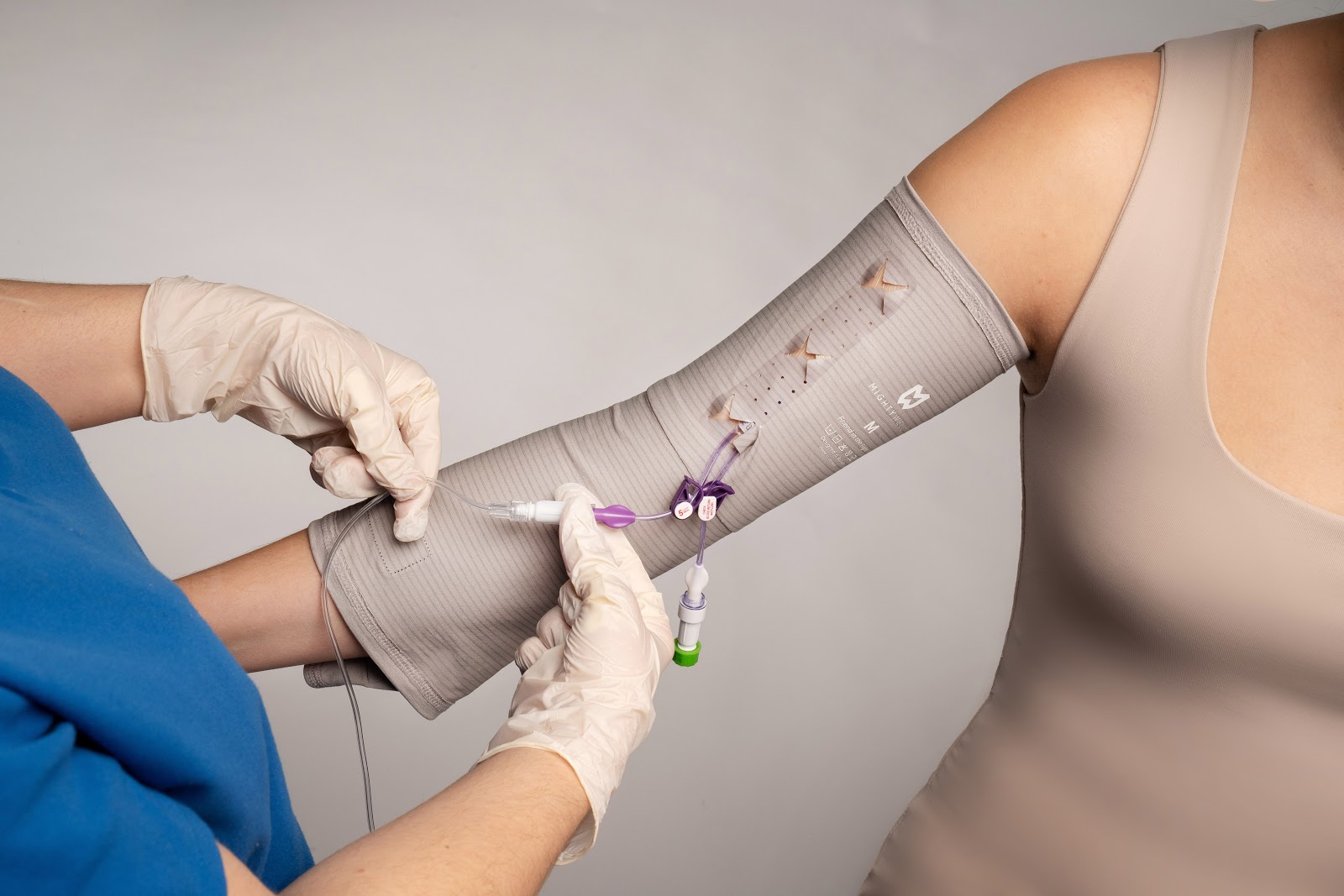PICC lines, and the treatments they make possible, can be the turning point for patients. Starting out with your first PICC line, however, can be nerve-wracking. Patients need to grapple with a slew of emotions, acceptance that a visible medical device is necessary, and the anxiety that often accompanies new procedures. Providers can make a world of difference by helping patients feel confident going into the procedure. We’ve chatted with patients and providers about what information is the most helpful before procedure day:
Logistics
As mundane as it may seem, knowing the simple details about where to go, what it will look like, and what to wear can go a long way. Let the patient know ahead of time where the appointment will take place, any tips for not getting lost, and people or equipment they might encounter once they get there. Estimate how long the actual procedure will take (roughly 20 minutes), as well as how long they should expect to be in the hospital in total (likely an hour). Remind them to wear comfortable clothes, especially a top they can easily maneuver with a fresh PICC line. This will all help them feel grounded in familiar detail and feel prepared with specific action steps.
Details of the procedure itself
Nothing frightens us quite like the unknown. If we can’t picture what a procedure will look like, our brains will fill the gaps with much scarier versions. Walk through what happens step-by-step, dispelling any unnerving myths. For example, make it clear that no needles will remain in their arm and that the catheter is thin and very flexible. Any visuals you can offer, such as diagrams, 3D models, or even a sample of the tube itself, will make the expectations more realistic and tangible, and therefore less scary.
Will it hurt?
The number one worry patients have is pain. Be sure to let them know their arm will be numbed (by a very thin needle) and that it is up to them to communicate if they feel pain at any point. Many patients, in the moment, will feel uncomfortable speaking up if something hurts or feels scary. Asking them directly to provide this helpful feedback will empower them to feel more in control of the situation, and may decrease their likelihood of pushing through unnecessary pain.
Next steps
Patients also want to know what to expect after leaving the hospital. Any examples of what they may experience — soreness, swelling, potential complications — as well as what to do in each case, will allow them to feel able to handle whatever comes next. Make sure they know the plan for going home: when their first nurse visit should take place, what they should and shouldn’t do while the arm heals, etc. It can be helpful, as well, to share some specific details. For example, let them know that it may take some time to find the right dressing products, and that they should speak up if itching or other discomfort occurs. Let them know about different PICC line cover options as well, so that they have time to purchase products ahead of time.
If your patients have used Mighty Well’s PICCPerfectⓇ PICC line covers, you know the benefits — they are antimicrobial, prevent irritation, keep everything in place, and reduce unnecessary dressing changes.
Interested in learning more about the PICCPerfect® Pro Garment-based Secondary Catheter Securement? Reach out here and we’ll be in touch!
Armed with the right information, specific next steps, and the best gear for comfort and protection, patients can go into a PICC placement feeling ready and confident!
Have more questions about PICCs, Ports, or vascular access? Check out our Educational Hub for videos and patient education made easy.

